Month and day details as per the Gujarati calendar is displayed in a simple and easily understandable manner. Gujarati calendar follows the Hindu Vikram Samvat dates. The current year as per this calendar is 2076.
Gujarati Calendar 2020 – 2021 , Samvat 2077 – Gujarati calendar month of Aaso – Kartak, English month of November 2020
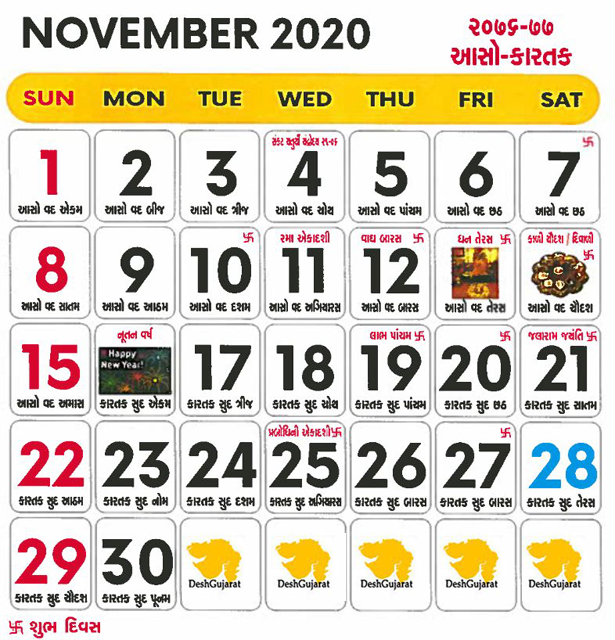
Gujarati Calendar 2020 – 2021, Samvat 2077 – Gujarati calendar month of Kartak – Magshar, English month of December 2020
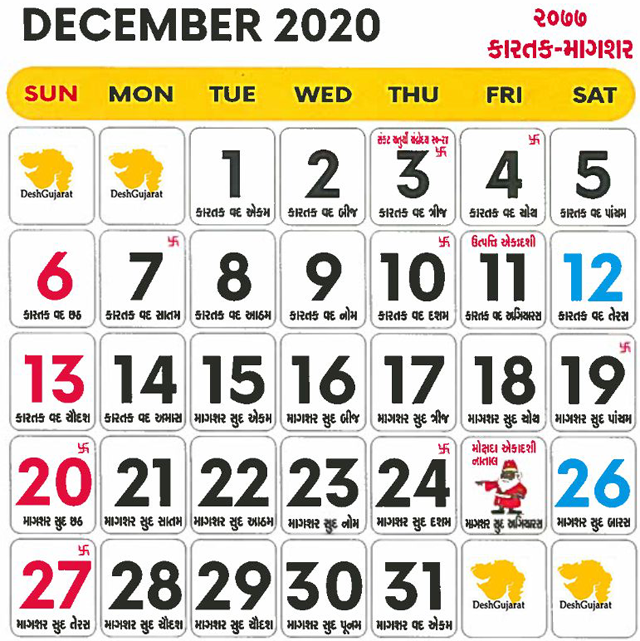
Gujarati Calendar 2021, Samvat 2077 – Gujarati calendar month of Magshar – Posh, English month of January 2021
Gujarati Calendar 2021, Samvat 2077 – Gujarati calendar month of Posh – Maha, English month of February 2021
Gujarati Calendar 2021, Samvat 2077 – Gujarati calendar month of Maha – Fagan , English month of March 2021
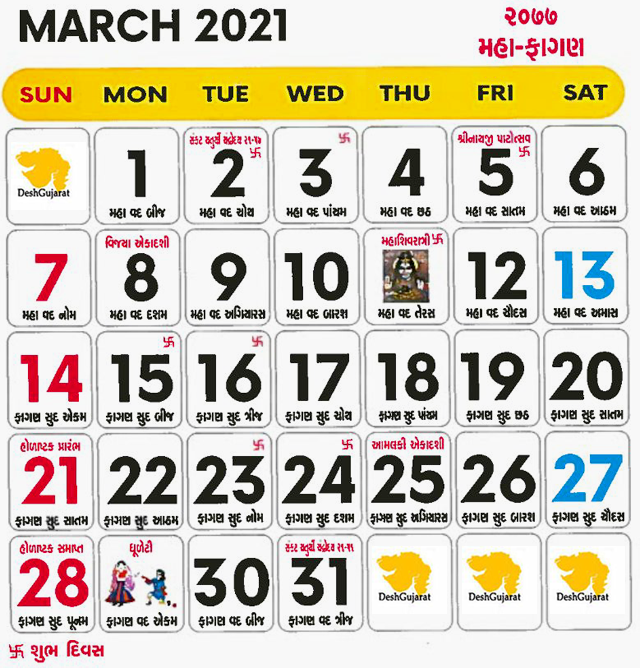
Gujarati Calendar 2021, Samvat 2077 – Gujarati calendar month of Fagan – Chaitra , English month of April 2021
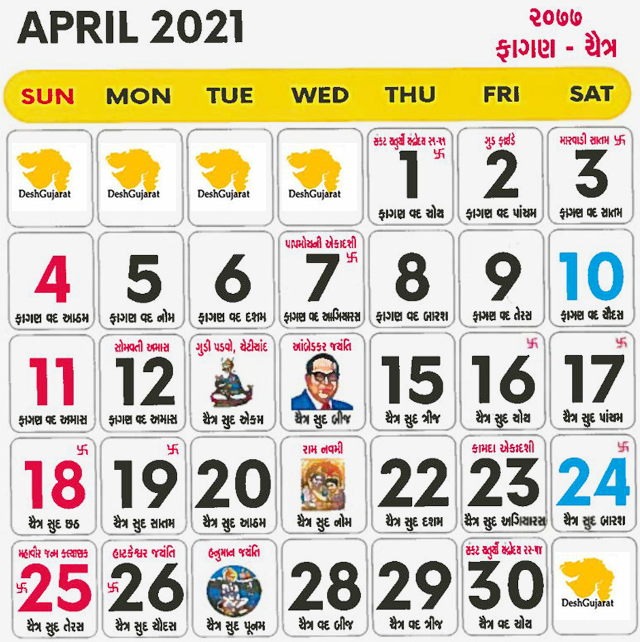
Gujarati Calendar 2021, Samvat 2077 – Gujarati calendar month of Chaitra – Vaishakh , English month of May 2021
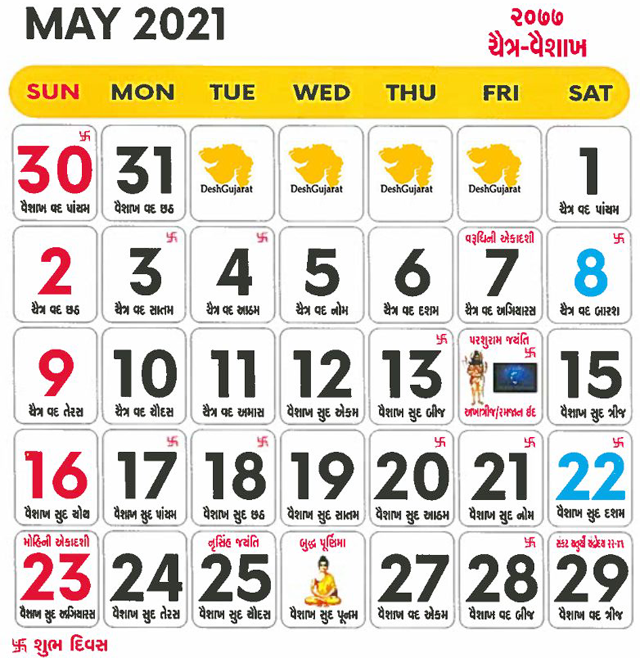
Gujarati Calendar 2021, Samvat 2077 – Gujarati calendar month of Vaishakh – Jeth , English month of June 2021

Gujarati Calendar 2021, Samvat 2077 – Gujarati calendar month of Jeth – Ashadh , English month of July 2021
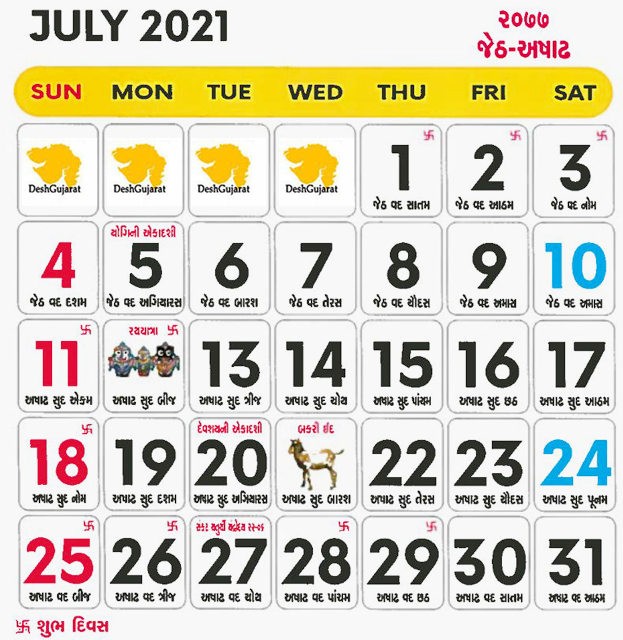
Gujarati Calendar 2021, Samvat 2077 – Gujarati calendar month of Ashadh – Shravan , English month of August 2021
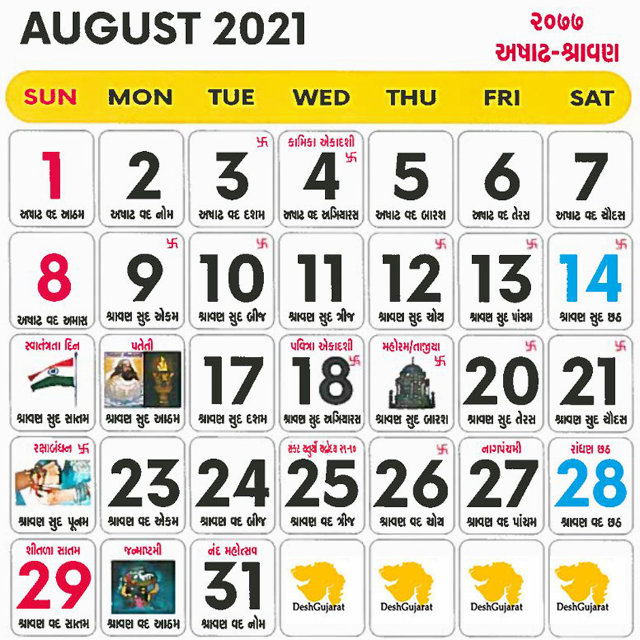
About Gujarati Calendar 2021 and Vikram Samvat 2077
Gujarati Hindu calendar is part of each Gujarati’s life. While Christian calendar is very much in practice at job/business/professional fronts, when it comes to spirituality or faith, when it comes to fairs and festivals, when it comes to identify auspicious days and holy schedules, Gujarati calendar is followed.
Gujarati calendar begins a day after Diwali. It begins with Gujarati month of Kartak followed by Magshar, Posh, Maha, Fagan, Chaitra, Vaishakh, Jeth, Ashadh, Shravan, Bhadarvo and Aaso.
Days in Gujarati calendar are pronounced like this: Monday = Somvar, Tuesday = Mangalvaar, Wednesday = Budhvaar, Thursday = Guruvaar, Friday = Shukravaar, Saturday = Shanivaar and Sunday = Ravivaar.
In general there are three seasons in India which are winter, summer and monsoon. They are respectively called Shiyaalo, Unaalo and Chomaasu in Gujarati language. However there are sub seasons too in each season. They are Vasant(spring), Grishma(summer), Varsha(monsoon), Sharad(autumn), Hemant(pre-winter) and Shishir(winter).
As per the Gujarati calendar, the months of Chaitra and Vaishakh are considered as Vasant or Spring. Similary Jeth and Ashadh are the months of Grishma or Summer. Shravana and Bhadarvo = Varsha or Monsoon. Aso and Kartak = Sharad or Autumn. Magshar and Posh mean Hemant or pre-winter and Maha and Fagan mean Shishir or Winter.
Gujarati Vikram Samvat Calendar is around 56-year ahead of Christian calendar. This means if as per Christian calendar it is year 2015, in Gujarati calendar it would be considered as 2015+56= 2071st year. The Vikrama Samvat lunar calendar was founded by the emperor Vikramaditya of Ujjain following his victory over the Shakas in 56 BCE. (To calculate the present Christian year, 57 years should be subtracted from the Indian year if the date is between starting of the Indian year and the end of the Western year i.e. between Kartak sud 1 and 31 December. If the date falls between the beginning of the Western year and the end of the Indian year i.e. between 1 January and Aso vad 30, then only 56 years should be subtracted.)
Gujarati Vikram Samvat calendar uses a solar year but divides it into 12 lunar months, each consisting 29 days 12 hours 44 minutes and 3 seconds. All together a lunar year of 354 days 8 hours 48 minutes and 36 seconds. To fix the lunar months into the solar year( because 60 solar months = 62 lunar months) there is a practice of adding an extra month which is called Adhik Mahino or Purushottam maas at interval of 30 months or say two and half years. In Gujarati Hindu Vikram Samvat Calendar seasons are as per the sun, months as per the moon and days as per both the sun and the moon.
Lunar days or tithis can have various lengths. Not only this but sometimes a tithi is omitted or sometime two continuous days share the same tithi. This is because in Gujarati Calendar the days are calculated using the difference of the longitudinal angle between the position of the sun and moon.
Difference between Gujarati Vikram Samvat Calendar year and northern Indian Vikram Samvat Calendar year is that while Gujarati Calendar year of Vikram Samvat begins with the first day after the new moon in the month of Kartak( a day after Diwali usually in October/November in popular calendar), in northern Indian parts the same Vikram Samvat calendar starts with the first day after the new moon in the month of Chaitra(usually in March/April in Christian calendar). On the other hand in Nepal where Vikram Samvat is official calendar the new year begins in the middle of April.
Gujarati Calendar 2021: Instruction of usage
Currently we are releasing only January 2020-November 2020 calendar pages. All the other months pages will be released soon. Your suggestions are welcome.
To download the calendar (1) Press right click of your mouse over the image of the page, (2) Select ‘Save Image As’ option, (3) Click over your selection.
To make it as a desktop wallpaper, (1)Press right click of your mouse over the image, (2) Select ‘Set as Desktop background’, (3) Click over your selection.
DeshGujarat
Note:Please wait till all images are loaded.
To download this: Please right click on image and click ‘save image as’. Each picture file is in png format.
Tag Words:Gujarati Calendar of year 2019, Vikram Samvat 2076, Gujarati months, Gujarati tithi, Gujarati festivals, holidays, panchang
Indian Calendar – An Introduction: The Western calendar is based on the sun, in which a year is the time required for the earth to complete one orbit around the sun. This precisely measures 365 days 5 hours 48 minutes and 46 seconds.
The Indian calender is ingeniously based on both the sun and the moon; it uses a solar year but divides it into 12 lunar months. A lunar month is precisely 29 days 12 hours 44 minutes and 3 seconds long. Twelve such months constitute a lunar year of 354 days 8 hours 48 minutes and 36 seconds. To help the lunar months coincide with the solar year, the practice of inserting an intercalary (extra) month arose. So 60 solar months = 62 lunar months. Hence an extra month, called the Adhik Mas, is inserted every 30 months i.e. every 2 ½ years.
Lunar days in the Indian calendar are called tithis. They are calculated using the difference of the longitudinal angle between the position of the sun and moon. Because of this, tithis may vary in length. Consequently, the tithi may or may not have changed by the time the day has changed at sunrise. And that is why we find at certain times a tithi being omitted, and at certain times, two consecutive days sharing the same tithi.
In the Indian calendar, seasons follow the sun; months follow the moon; and days, both the sun and the moon. The era in the Indian calendar is called the Vikram Era, or the Vikram Samvat, which began in 57 BCE. To calculate the corresponding year of the Common Era, 57 years should be subtracted from the Indian year if the date falls between the beginning of the Indian year and the end of the Western year i.e. between Kartak sud 1 and 31 December. If the date falls between the beginning of the Western year and the end of the Indian year i.e. between 1 January and Aso vad 30, then only 56 years should be subtracted.
We present the 2020 year calendar with the tithis, dates and holy festivals of India

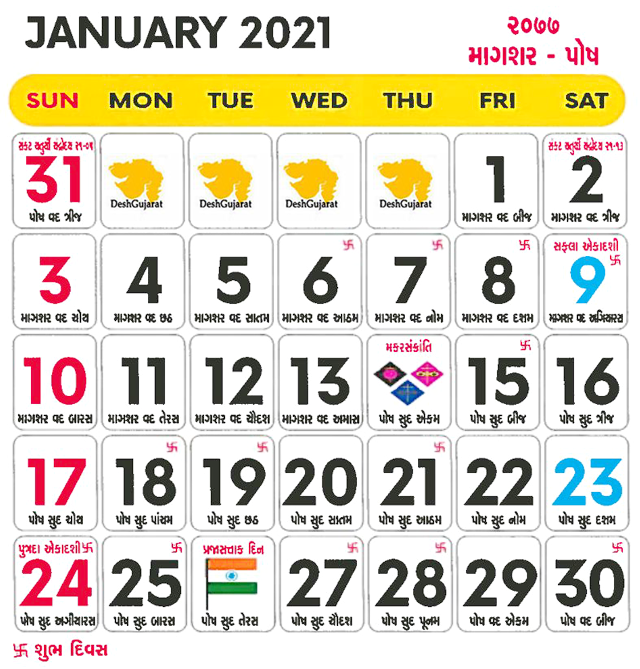
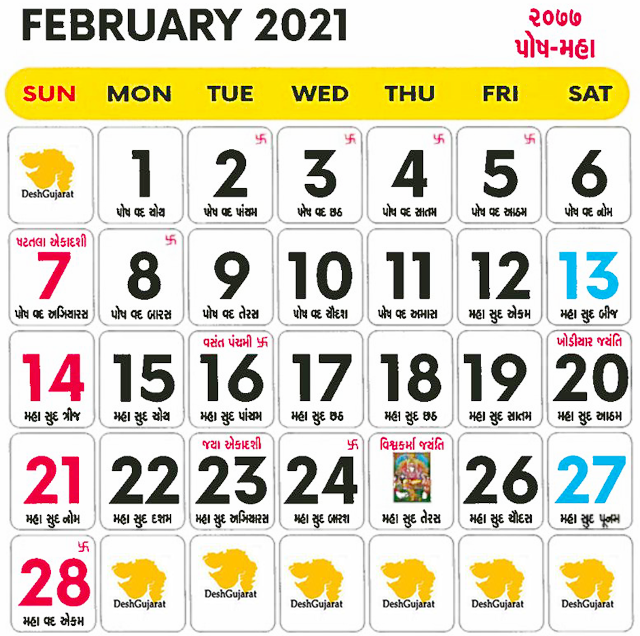

No comments:
Post a Comment